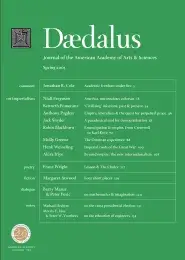on mathematics, imagination & the beauty of numbers
PETER PESIC: Many intelligent people only see in mathematics a wasteland of dreary formalism, a mind-numbing expanse of theorems and proofs expressed in very abstract language. Doubtless this is partly due to the way it is taught, but such teaching is widespread, the product of good intentions and much effort. The disconnection between the inner, lived world of mathematicians and the mainstream of intelligent people is very deep, despite the sensual character of mathematics that you describe so well in your recent book, Imagining Numbers: (particuarly the square root of minus fifteen). This raises a hard question: How–if at all– can this living world of mathematics become accessible?
BARRY MAZUR: I can’t answer that question, but I can offer some comments. A person’s first steps in his or her mathematical development are exceedingly important. Early education deserves our efforts and ingenuity. But also here is a message to any older person who has never given a thought to mathematics or science during their school days or afterwards: You may be ready to start. Starting can be intellectually thrilling, and there are quite a few old classics written in just the right style to accompany you as you begin to take your first steps in mathematics. I’m thinking, for example, of the old T. C. Mits series, or Tobias Dantizg’s wonderful Number: The Language of Science, or Lancelot Hogben’s Mathematics for the Millions. Moreover, one should not be dismayed that there are many steps– there is no need to take them all. Just enjoy each one you do take.
Bill Thurston, a great geometer, uses the word ‘tall’ to describe mathematics: math is a tall subject in the sense that skyscrapers are tall. That is, one piece of mathematics lies on top of a prior piece of mathematics and lies under the next piece of mathematics, etc. To get to the fiftieth story you must traverse all the prior forty-nine, and in the right order. I like this image, but would want to insist that it may be more of a Gaudi-esque structure, with a wide choice of alternate staircases joining and crossing so if you are ever uncomfortable with one route –if the risers are too high, or not high enough–there are other, more accommodating stairwells. And besides, even the view from the first story is a marvel.
. . .
